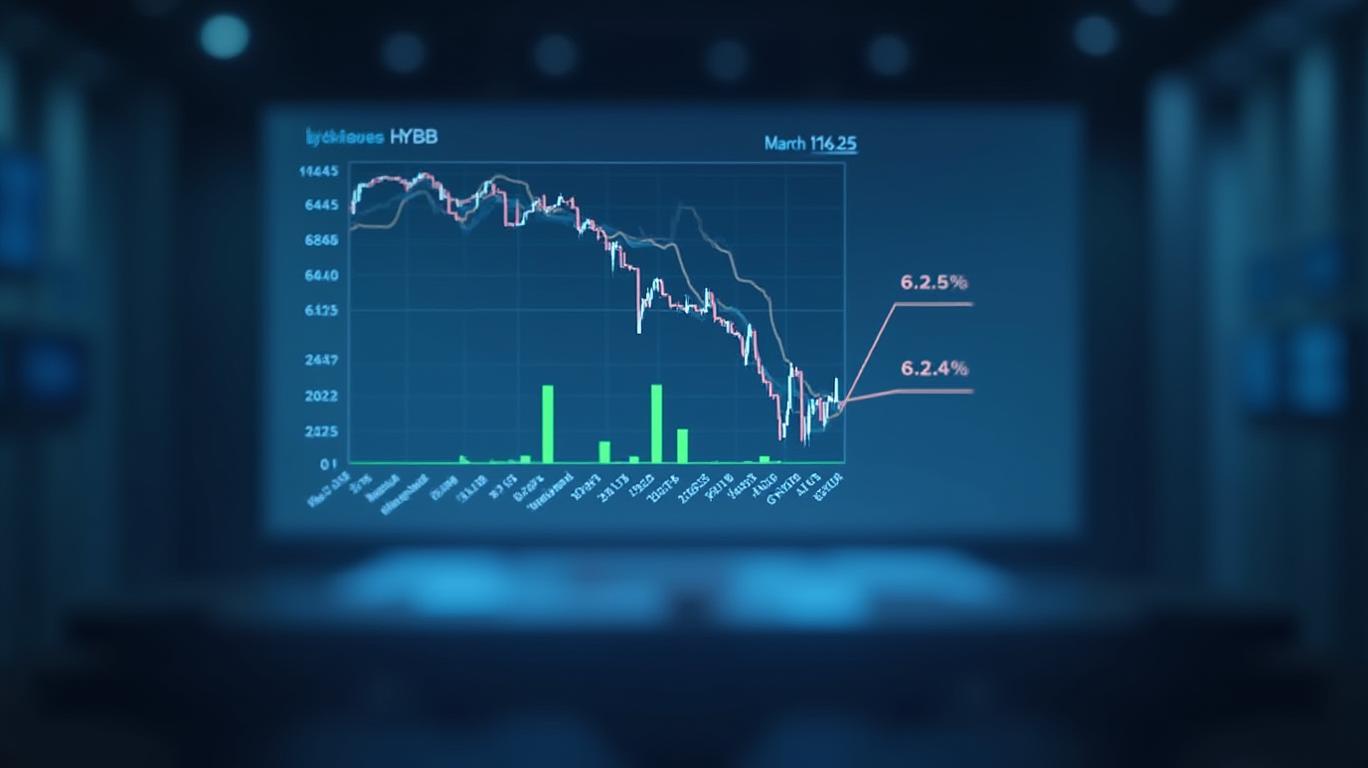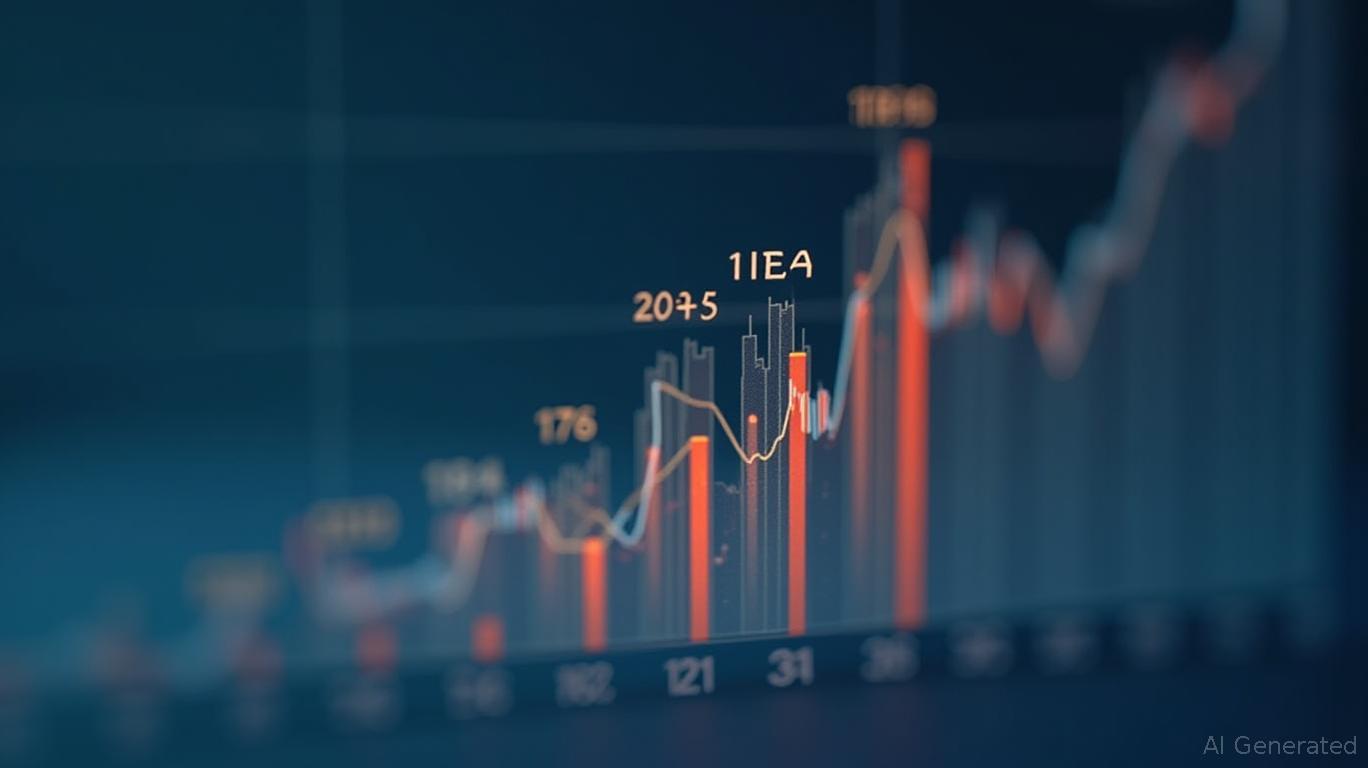iShares HYBB's $0.3715 Monthly Distribution: Navigating High-Yield Risks and Rewards
The iShares BB Rated Corporate Bond ETF (HYBB) recently declared a monthly distribution of $0.3715 for May 2025, marking a slight increase from its March 2025 payout of $0.2409. This announcement underscores the fund’s role as a yield-focused vehicle for investors seeking income in a high-yield bond market. However, the decision comes amid a backdrop of rising interest rates, widening credit spreads, and volatile bond prices. Here’s what investors need to know.

The Distribution in Context
The May distribution translates to an annualized yield of 6.67%, based on the fund’s May 1 NAV of $45.67. This represents a 3% increase from its $2.91 annual dividend rate in late 2024, reflecting HYBB’s strategy of adjusting payouts to match its underlying bond portfolio’s cash flows. The fund’s yield has been climbing alongside bond prices falling: since March 2025, its NAV dropped 1.7%, while its Aggregate Cash Flow (ACF) Yield rose 3.7% to 6.45% (
Risks and Rewards of High-Yield Exposure
HYBB’s focus on BB-rated corporate bonds—non-investment-grade debt issued by companies with higher default risks—means investors must weigh income potential against credit and interest rate risk. The fund’s spread over 5-year Treasury yields widened from 215 basis points in March to 273 basis points in May, signaling increased investor skepticism about corporate credit quality. This could reflect fears of economic slowdowns or rising default rates, but it also means HYBB’s yield premium over safer Treasuries has grown.
The fund’s structure, however, mitigates some risks. HYBB tracks the ICE BofA BB US High Yield Constrained Index, which limits issuer exposure to 2% and focuses on bonds with at least one year to maturity. This diversification reduces the impact of any single company’s troubles. Still, the ETF’s modified duration of 3.69 years means its price could drop 3.69% for every 1% rise in interest rates—a meaningful risk if the Federal Reserve continues tightening.
Performance and Volatility
HYBB’s dividend history reveals a pattern of short-term fluctuations but longer-term growth. Over three years, the fund has increased its dividend 18 times and decreased it 17 times, reflecting the high-yield market’s sensitivity to economic cycles. While its 1-year dividend growth rate dipped to -0.59%, the 3-year growth rate of 8.87% suggests resilience over time. Investors should expect similar volatility in 2025, especially as the Federal Reserve’s policy path remains uncertain.
Considerations for Investors
- Expense Ratio: While not disclosed in the provided data, HYBB likely has a low expense ratio typical of iShares ETFs (e.g., ~0.20%), which is competitive for bond funds.
- Liquidity: HYBB trades commission-free on Fidelity, with decent liquidity, making it easy to buy and sell.
- ESG Concerns: The fund explicitly avoids ESG criteria, so investors seeking sustainability-focused income should look elsewhere.
- Diversification: HYBB’s BB-rated focus complements, but shouldn’t replace, core bond holdings in higher-quality sectors.
Conclusion
The iShares HYBB ETF’s $0.3715 May distribution positions it as a compelling income generator, especially for investors willing to accept high-yield risks. With a 6.67% annualized yield and a widening spread over Treasuries, HYBB offers a premium return—but at the cost of heightened sensitivity to credit and rate fluctuations.
Investors should note that HYBB’s NAV has fallen 1.7% since March 2025, and its duration of 3.69 years amplifies interest rate risk. Yet its 3-year dividend growth and diversified portfolio suggest it can navigate cycles better than individual bonds. For income seekers with a long-term horizon and tolerance for volatility, HYBB remains a viable option—provided they monitor credit fundamentals and rate trends closely.
In short, HYBB’s distribution increase highlights its income appeal, but investors must balance that against its risks. As always, diversification and a clear risk tolerance are key.










